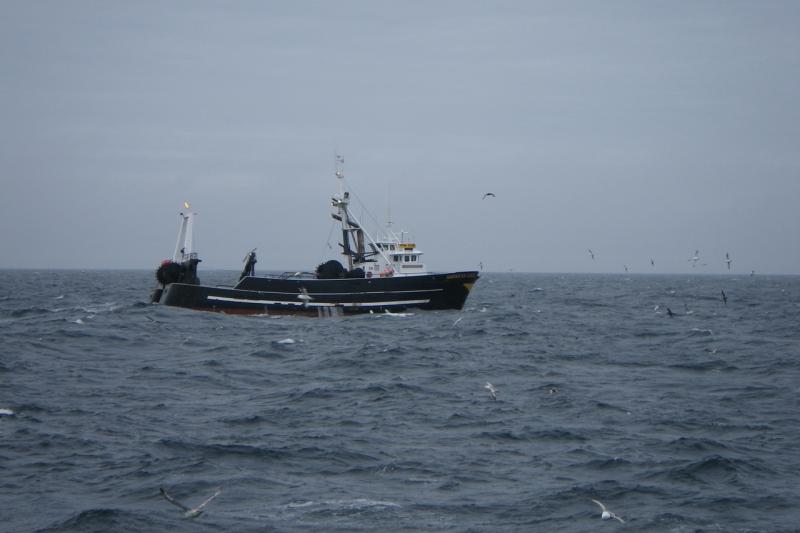Sea surface conditions in the Central Gulf of Alaska have remained below marine heatwave conditions (sea surface temperature elevated above the 90th percentile for more than 5 consecutive days) since early March of 2021. There have been episodes of days with exceptionally warm water above the 90th percentile, however none have exceeded the threshold of 5 or more consecutive days. June 2021 had the coolest sea surface temperatures experienced in the past 7 years. A cool June was followed by highly variable temperatures throughout July and August. The sea surface temperatures in the Central GOA have remained above the long-term (1982-2012) mean since August 18, 2021. However sea surface temperatures have not approached the 90th percentile between then and September 6.
Why monitor marine heatwaves in the Gulf of Alaska?
Climate change is impacting the ecosystem of the Gulf of Alaska and effects are expected to magnify as warming increases over the coming decades. Over the past 6 years, the Gulf of Alaska has been experiencing extended and severe marine heatwaves. From June 2014 to January 2017 the North Pacific, including the Gulf of Alaska, had increased temperatures over a region of approximately 2 million km2 with more than 2.5 °C warmer than the long-term mean (1982–2012). The 2014–2016 marine heatwave changed the ecology of the region with reduced phytoplankton production, a shift in zooplankton production from large lipid-rich (higher fat) copepods to small lipid-poor copepods, and reduced forage fish populations such as capelin (Mallotus villosus) and Pacific sand lance (Ammodytes hexapterus). Species at the top of the marine food chain experienced lower recruitment (reduced juvenile survival) and increased mortality in fish, birds, and mammals.
We will provide monthly updates on marine heatwave conditions in the Gulf of Alaska via social media @NOAAFisheriesAK and via this webpage. We will share what we are learning about current conditions in the Gulf of Alaska this year.
Interpreting the Graph
The graph shows satellite-derived sea surface temperature anomaly data for the central Gulf of Alaska. Here the central Gulf of Alaska is defined as the area between 145ºW and 160ºW longitude in waters less than 300 meters depth. The figure on the left shows the daily sea surface temperature anomaly (dark line), the 360 day rolling average (blue line), and time periods classified as having marine heatwave conditions (orange shading) for January 1, 1981 through the present. The figure on the right shows the same for the previous 90 days only.
How were these graphs generated?
The daily sea surface temperatures for January 1, 1981 through September 6, 2021 were retrieved from the NOAA High-resolution Blended Analysis Data database. They were filtered to only include data from the central GOA between 145°W and 160°W longitude for waters less than 300 m in depth. The baseline daily mean sea surface temperatures were calculated for the entire region using all points for each individual day of the year. The daily mean sea surface temperature data were processed through the R package heatwaveR (Schlegel and Smit 2018) to identify marine heatwave conditions (Hobday, Alexander, et al. 2016) which were defined as 5 days or more with daily mean sea surface temperatures greater than the 90th percentile of the time series. January 1, 1982 through December 31, 2012 were used as a baseline for defining daily anomalies and 90th percentiles.
Hobday, A.J., Alexander, L.V., Perkins, S.E., Smale, D.A., Straub, S.C., Oliver, E.C., Benthuysen, J.A., Burrows, M.T., Donat, M.G., Feng, M. and Holbrook, N.J., 2016. A hierarchical approach to defining marine heatwaves. Progress in Oceanography, 141: 227-238. https://doi.org/10.1016/j.pocean.2015.12.014
Schlegel, R. W., and Smit, A.J., 2018. heatwaveR: Detect heatwaves and cold-spells. R package version 0.3.0. https://CRAN.R-project.org/package=heatwaveR


